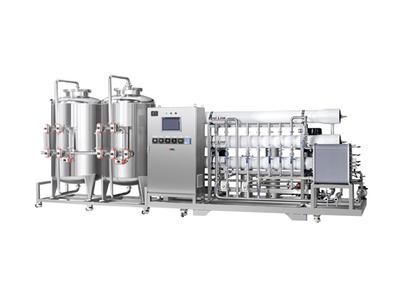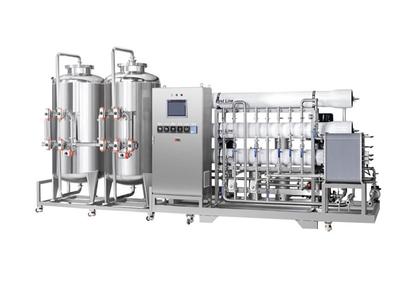In the pharmaceutical industry, WFI (Water for Injection) is an extremely critical production resource. It is widely used in the preparation, cleaning, and sterilization processes of products such as injectables, infusions, vaccines, and sterile formulations, with very stringent requirements for purity and sterility. However, high-quality WFI production alone is not enough—safely, stably, and efficiently transporting this high-purity water to various usage points relies on a scientific and rigorous WFI distribution system. This system is a key component in ensuring that the pharmaceutical process complies with GMP (Good Manufacturing Practice) standards.
The WFI distribution system refers to the entire network of pipes and control systems that transport WFI from storage tanks to various water usage points within a pharmaceutical plant. It typically includes the following main components:
Storage Tank: Used for temporarily storing distilled or purified WFI, maintaining a constant temperature and sterile state.
Circulation Pump: Drives water flow circulation, ensuring continuous water flow within the pipeline network to prevent bacterial growth.
Pipeline System: Made of stainless steel 316L with fully welded and polished design and no dead corners.
Thermal Control System (Heating/Insulation): Maintains a temperature above 80°C to prevent microbial contamination.
Water Usage Points: Includes points for processes such as formulation, cleaning, and sterilization, equipped with sampling ports and anti-cross-contamination devices.
Control System: Supports PLC+HMI automatic control, monitoring key parameters such as temperature, pressure, flow, and TOC (Total Organic Carbon).
The entire system design follows the core principle of "preventing microbial growth," using methods such as thermal cycling, UV sterilization, and filtration to ensure that WFI is not contaminated throughout the distribution process.
The distribution system generally operates in a high-temperature state (around 80°C) to effectively prevent bacterial growth, which is a crucial means of maintaining water purity.
With the help of a PLC system, operators can monitor system status in real-time and automatically complete temperature, pressure adjustments, and cleaning/disinfection processes, enhancing production efficiency and reducing human error.
Equipped with CIP (Clean-in-Place) and SIP (Sterilize-in-Place) functions to ensure the internal distribution system does not develop biofilms or deposits from long-term operation.
Both the material of the equipment, design structure, and operational control systems meet the regulatory requirements for WFI set by USP, EP, JP, etc., ensuring legal and compliant pharmaceutical production.
Injectables and Infusion Production Workshops: Transporting WFI to various formulation tanks and bottle washing processes
Sterile Formulation Workshops: Supplying sterilization equipment and filling systems
Pharmaceutical Cleaning Equipment: Providing sterile water for CIP systems
Pharmaceutical R&D Centers: Distributing high-purity water for laboratory use
The WFI Distribution System is the last line of defense in ensuring the sterility, safety, and high-quality production of pharmaceutical products. It reflects not only the technical aspects of water resource management but also the core part of the pharmaceutical process quality control system. With the development of biopharmaceuticals and high-end injectables, the design and operation of WFI distribution systems are constantly evolving towards more intelligent, efficient, and safer directions. Understanding the principles and requirements of the WFI distribution system is essential professional knowledge for every pharmaceutical engineer and quality personnel.


